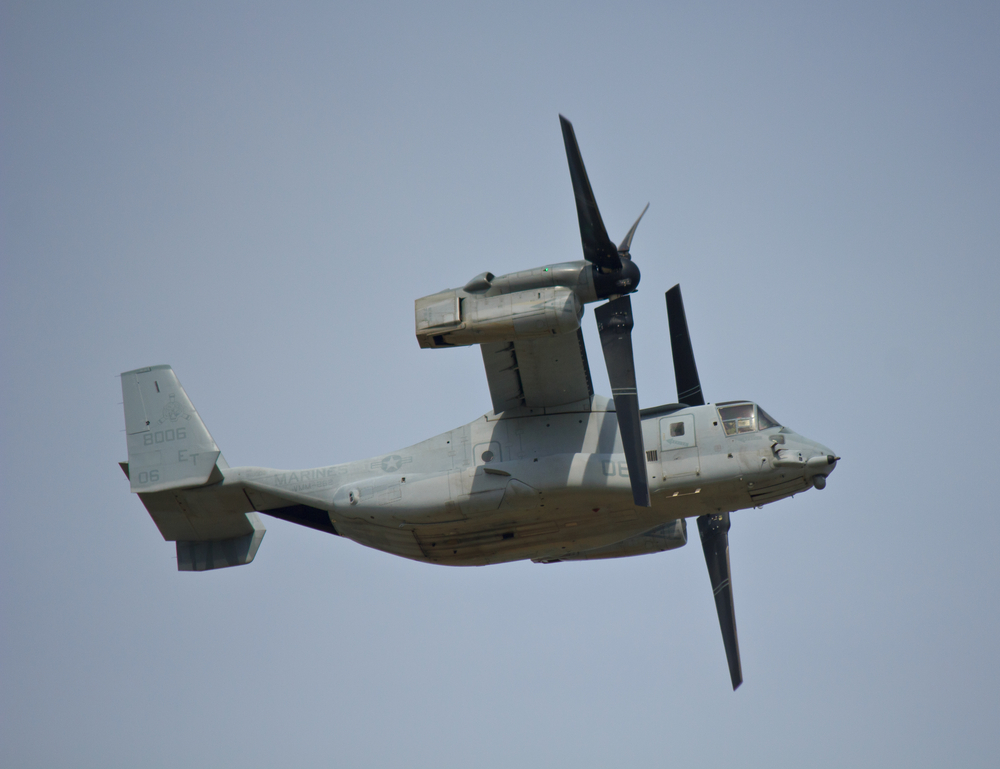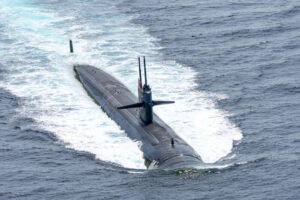From the ashes of a failed helicopter hostage rescue mission in 1980 came a revolution in aviation, known as the tiltrotor.
To fully appreciate the U.S. military’s embrace of tiltrotor, it helps to know how tiltrotor technology is different, and in many cases superior, to standard helicopter technology.
Following the failed 1980 hostage rescue mission in Iran that ended in disaster, the U.S. military started looking at tiltrotors to meet the need for increased speed and range. Those capabilities would reduce or eliminate the need for refueling bases along the route of a long-distance mission.
Only tiltrotor technology could meet this need, being able to land and take off vertically like a helicopter, while traveling faster and farther than a helicopter in airplane mode.
The comparative size of a V-22 Osprey’s tiltrotors underscores the point. An Osprey’s rotor is 38 feet in diameter. That rotor diameter splits the difference between two 15-ton aircraft: the CH-47 Chinook, a tandem helicopter with two 60-foot rotors, and the ATR 72-500 commuter airplane, with two 11-foot props.
What differentiates tiltrotors from helicopters is that while both have rotors, they have vast capability differences.
Speed and power consumption are big differences
Speed is a major differentiator. A helicopter is limited in its forward speed due to the sound barrier and what’s called retreating blade stall. As a rotor moves forward, it cannot exceed the speed of sound. As it retreats away from the direction of the aircraft, it causes blade stall.
Further, because helicopter rotor blades provide both vertical lift and horizontal thrust, too much forward thrust erodes the helicopter’s vertical lift.
Helicopters have a nominal top cruising speed of around 175 mph with dash speeds as high as 230 mph in a descent. That cruising speed can be enhanced by adding a wing, or pusher-prop or both, but only by so much.
Power consumption is another differentiator. Helicopters are power-hungry at high cruise speeds. A helicopter’s cruise power requirement is 2.7 times that of a tiltrotor. Where a helicopter struggles above 175mph, a tiltrotor cruises easily at 290 mph.
Accordingly, tiltrotors can cruise much faster and at greater altitudes than helicopters. In “airplane mode” the tiltrotor’s wings produce all the lift, and its proprotors produce all the thrust. A helicopter’s blades – the rotating wings – do double-duty, producing both the lift and the forward thrust.
A helicopter’s range also has a direct correlation to its payload. A helicopter can lift its maximum payload at zero range (but assuming no fuel), and zero payload at maximum range (assuming max fuel). Larger helicopters can carry more payload at short to medium ranges, but they have very little advantage in range with zero payload – max fuel.
Today, the V-22 Osprey – in versions tailored to the Marine Corps, the Navy and Air Force Special Forces respectively – are widely used, having flown collectively over 750,000 hours.
The Navy grounded the V-22 fleet in March after the crash of an Air Force V-22 last December killed eight airmen off the coast of Japan. Investigators determined that the cause was “a materiel failure of a V-22 component.” The service gave the fleet the green light to return to service in March. “Officials used the time to do a thorough review of the mishap and test risk-mitigation controls,” said a Department of Defense article.
Next generation tiltrotor selected by the Army
The next generation of tiltrotor is now emerging. The U.S. Army has selected a next-generation tiltrotor for its Future Long-Range Assault Aircraft program. It chose the Bell V-280 technical demonstrator over the Sikorsky-Boeing SB-1 demonstrator. The latter was based on a coaxial helicopter design, where two sets of rotors are stacked and rotate in opposite directions, with a pusher-prop at the tail.
Tiltrotors are far superior to helicopters, compounded or not, for high-speed, high-altitude, long-range missions.
Given the lethality of modern weapon systems and the vulnerability of critical logistics nodes needed for refueling and rearming, the inherent value of range and speed is the key reason tiltrotor aircraft have earned an important place on the modern battlefield today. They will be even more vital to concepts of operations in the future.







